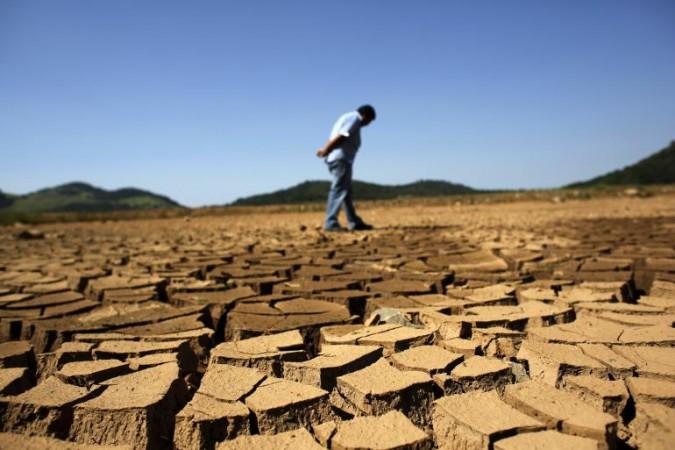
The American west is locked in what's likely to be recorded as the worst drought in U.S. history as farmers and industries from Texas to California despair over conditions so severe that California is expected to introduce statewide mandatory water restrictions for the first time ever.
But the U.S. isn't alone, severe drought conditions are also plaguing Australia and some regions in Africa, threatening to cause food shortages in some of the poorest nations on earth and higher prices across the developed world.
In South America, a drought in northeastern Brazil has wreaked havoc among coffee growers and spiked coffee prices around the world.
According to the latest available data from the Global Drought Information System,
"In June 2014, short-term global drought conditions remained relatively constant with degradation mainly in Asia and Africa. Asia saw drought intensify, particularly on the Indian sub-continent, in north-central Russia, on Japan, and in the Middle East. Conditions in Southeast Asia have remained constant or improved. Drought intensified in equatorial Africa and on Madagascar, as well as in South Africa. In North America, drought remained entrenched in the West while conditions in the North have improved. In South America, drought remained consistent around the equator and in areas of Brazil. In Europe, drought continued to improve throughout the Mediterranean and Black Sea region and in the Central parts of the continent. In Australia, drought eased slightly in intensity but spread to cover more of the East. Other areas of Oceana, to the east of Australia, saw a slight degradation in drought conditions, while to the north of the continent, conditions have improved slightly."
And according to UNICEF, The United Nations Childrens'; Fund, these countries are facing drought conditions:
Country-by-country overview
Ethiopia: An estimated 8 million of Ethiopia's 60 million people are at immediate risk due to drought. UNICEF estimates that 1.4 million of those at risk are children under five. (See Ethiopia: The hardest hit and the Ethiopia Donor Update .)
Eritrea: Successive years of drought, combined with the border war with Ethiopia, has created major food shortages. Nearly 1.3 million people are at risk, including an estimated 1 million who have been displaced by the war. (See the Eritrea Donor Update .)
Somalia: Due to seven consecutive poor harvests coupled with chronic insecurity in some regions, food stability is deteriorating, affecting as many as one million people, including 300,000 children aged under 5 years. The drought has been made worse by sudden torrential rains and flash flooding. (See the Somalia Donor Update .)
Sudan: An estimated 2.8 million people in the south face food insecurity in the coming months.
Uganda: About 550,000 people face food insecurity.
Afghanistan: Large parts of the south are severely affected, where 60 to 80 percent of livestock have died. Almost 2.5 million people, or 10 percent of the population, are at risk and many of them will need assistance for at least the next 12 months.
China: In the northern Shanxi province, nearly 3 million people don't have enough water. About one-third of the province's wheat crop has been hit by the drought and more than 60 percent of its soil lacks water.
India: The government has mobilized massive relief efforts in several regions. Madhya Pradesh, along with the western states of Rajasthan and Gujarat and Andhra Pradesh in the south, are in the grip of a severe drought following the failure of last year's monsoon rains. Nearly 130 million people living in 12 States have been seriously affected by what some officials call the worst drought in 100 years. (See India page.)
Iran: The government has informed the United Nations office in Tehran that it is ready to accept international aid to help meet losses estimated at $1.7 billion from the drought. Iran needs about $200 million to provide water tankers and water purifying units for drought-hit areas.
Morocco: The government has launched a $633 million contingency plan to combat the worst drought for a decade. About 70 percent of the country's arable land has been affected.
Pakistan: Government officials estimate that nearly 3 million people - mostly villagers - face possible starvation. Hundreds of thousands of people have fled Pakistan's southern Thar Desert. The drought has devastated crops and livestock in the desert, home to 1 million people, sparking fears of a massive humanitarian crisis.

















